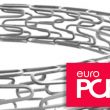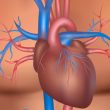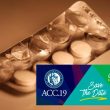Data from randomized studies are also supported by the SCAAR registry, in which ultrathin-strut stents show real-world advantages. Patients with small vessels who received ultrathin-strut stents are less likely to undergo revascularization at 3 years than those who received first-generation thin-strut devices, according to the BIO-RESORT trial, presented during the first day of the annual<a href="https://solaci.org/en/2019/05/23/europcr-2019-bio-resort-and-scaar-registry-ultrathin-struts-also-in-small-vessels-pequenos/" title="Read more" >...</a>
New Percutaneous Devices to Prevent Embolism in Atrial Fibrillation
Patients with atrial fibrillation (AF) unsuitable for anticoagulation because of bleeding risk, require other strategies to prevent stroke. For some years, there have been in the market (limited to some places; not as part of the regular agenda of cardiologists and hematologists) devices to occlude the atrium that have been proved safe and effective. These<a href="https://solaci.org/en/2019/05/19/new-percutaneous-devices-to-prevent-embolism-in-atrial-fibrillation/" title="Read more" >...</a>
Nonobstructive Coronary Lesions and Ventricular Dysfunction
Many patients arrive to the cath lab for a diagnostic coronary angiography after an echo showing severe ventricular dysfunction, even in asymptomatic patients. In many occasions, their coronary arteries are normal, and in many others, we find coronary disease that is not enough to warrant such severe ventricular dysfunction. Patients with heart failure are frequently<a href="https://solaci.org/en/2019/05/17/nonobstructive-coronary-lesions-and-ventricular-dysfunction/" title="Read more" >...</a>
Patients: What They Really Want to Know about Their Disease
When we decide that 30-day mortality to repair an abdominal aortic aneurysm (AAA) is at least twice as high with conventional surgery compared against endovascular treatment, many of us think choosing a strategy is far from hard, and recent stats show exactly that. However, are we sure our patient agrees with us, or at least<a href="https://solaci.org/en/2019/05/15/patients-what-they-really-want-to-know-about-their-disease/" title="Read more" >...</a>
ACC 2019 | SMART-CHOICE: Aspirin Increasingly “Against the Ropes”
This work (presented during the same American College of Cardiology [ACC] 2019 Scientific Session as the STOPDAPT-2 trial) enrolled 2993 patients who underwent angioplasty with current-generation stents Xience, Promus, Synergy, or Orsiro at 33 Korean sites. Patients were randomized to 12 months of dual antiplatelet therapy or dropping aspirin at 3 months. There was no difference between the short-<a href="https://solaci.org/en/2019/03/25/acc-2019-smart-choice-aspirin-increasingly-against-the-ropes/" title="Read more" >...</a>
ACC 2019 | AUGUSTUS: Apixaban Plus P2Y12 Inhibitor Is the Best Combination in Atrial Fibrillation and Angioplasty
Aspirin increases bleeding with no ischemic benefit, but a trend toward more stent thrombosis with placebo warrants further studies. Patients with atrial fibrillation who receive an anticoagulant agent and coronary angioplasty with a stent, and then continue with aspirin, experience an increased risk of bleeding without any ischemic benefit whatsoever. The use of a<a href="https://solaci.org/en/2019/03/25/acc-2019-augustus-apixaban-plus-p2y12-inhibitor-is-the-best-combination-in-atrial-fibrillation-and-angioplasty/" title="Read more" >...</a>
The Most Relevant Articles of 2018 in Pharmacology and Clinical Cardiology – Part 2
1- What Antiplatelet Therapy Should We Use in Patients with Stroke/TIA? Interesting Results for the POINT Trial The New England Journal of Medicine (NEJM) recently published an article about the POINT trial (simultaneously presented at the European Stroke Organisation Conference), a long-awaited randomized clinical trial to assess the efficacy and safety of dual antiplatelet therapy<a href="https://solaci.org/en/2019/01/25/the-most-relevant-articles-of-2018-in-pharmacology-and-clinical-cardiology-part-2/" title="Read more" >...</a>
The Most Relevant Articles of 2018 in Pharmacology and Clinical Cardiology
1- New High Blood Pressure Guidelines The wait is finally over: the high blood pressure guidelines that have been in the works for the past 3 years saw the light of day at the American Heart Association (AHA) 2017 Scientific Sessions. Read more 2- New European Hypertension Guidelines Contrast with American Recommendations The European<a href="https://solaci.org/en/2019/01/21/the-most-relevant-articles-of-2018-in-pharmacology-and-clinical-cardiology/" title="Read more" >...</a>
What is the best antiplatelet in PCI to vein grafts?
Courtesy of Dr. Carlos Fava. PCI to saphenous vein grafts is one the greatest challenges these days because, as opposed to native arteries, they present important thrombolytic material, diffuse and long lesions, and abundant macrophage and inflammatory cells, which makes the procedure more complex. At present, we have not yet agreed on the best antiplatelet<a href="https://solaci.org/en/2019/01/07/what-is-the-best-antiplatelet-in-pci-to-vein-grafts/" title="Read more" >...</a>
TCT 2018 | SORT OUT IX: Polymer-Free DES with Ultra-Thin Struts vs. Bioresorbable Polymer- Based DES
Polymer persistence in 1st and 2nd generation DES meant to allow drug release has been associated with a chronic inflammatory response that might be associated to restenosis, neo atherosclerosis and stent thrombosis. This is the rationale behind the development of polymer free and bioresorbable polymer-based DES. They have both been compared against permanent polymer DES,<a href="https://solaci.org/en/2018/10/03/tct-2018-sort-out-ix-polymer-free-des-with-ultra-thin-struts-vs-bioresorbable-polymer-based-des/" title="Read more" >...</a>









